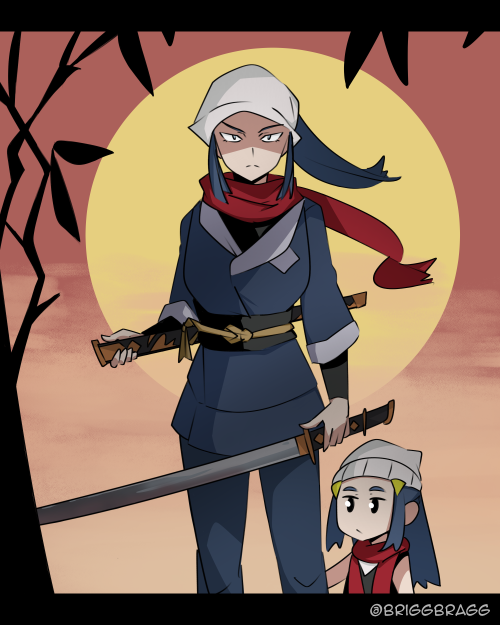#lone wolf and cub

❌DO NOT REPOST❌ Did this for fun. Here’s another Lone wolf and Cub theme svtfoe with lil baby Moon as Daigoro.

Hey. Sorry, I’ve been taking a break for personal reasons. Anyway, this was an idea I had a while ago, plus I was watching a lot of retro Japanese movies. So if Comet and Moon had their own movie, it would be like Lone wolf and Cub. #starvstheforcesofevil❌DO NOT REPOSED❌

Chapter 11, The Arrival of the Cold. 寒到来 (kantourai).

So, “aka neko” (Red Cat) appears to refer to this guy, an arson. So I guess “red” was not health or blood, but fire (火, hi).
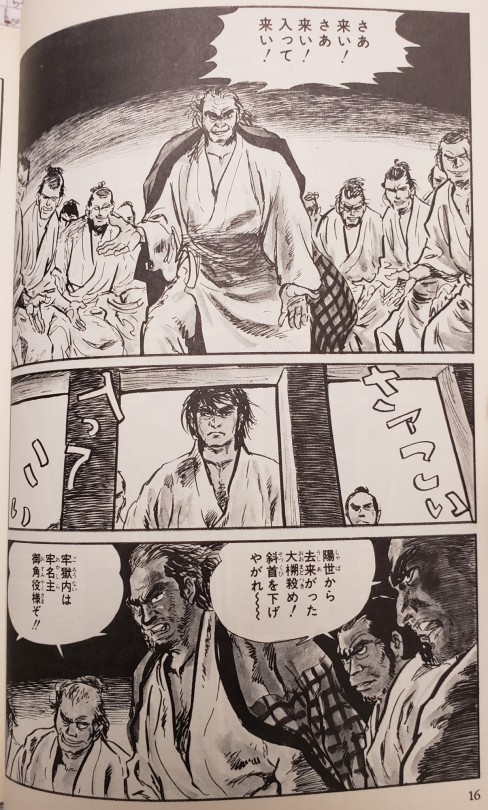
So the convicts in the jail are indeed singing a welcome song for Ogami Itto! “Saa, koi” and such all amounts to “So come, come on in!” The guy at the bottom adds a bunch of stuff about leaving the world behind…
This series was written a good 20 years before Disney’s Beauty and the Beast, but somehow I can’t help but think of “Be Our Guest” here, Edo-era prison style.

Ogami Itto is being thrown into prison. The guy on the left says “Hey guys, it’s time to do the welcome song!”
Whu….?

Kozure Ookami (Lone Wolf and Cub) Chapter 10: 赤猫まねき (akaneko maneki), Red Cat Invitation. Interestingly, the English translation goes with just “Red Cat.” People might be familiar with the “maneki neko,” the beckoning cat – usually a ceramic or status of a cat sitting on its hind legs and with a front paw (or both front paws) raised in beckoning. Usually maneki comes before neko, so I’m not sure of the significance here of it coming after. Also, red maneki cats usually symbolize good health, but red can also symbolize blood….

On to Volume 2 of Kozure Ookami (子連れ狼), Lone Wolf and Cub, featuring Daigoro with a かざぐるま (kazaguruma, a pinwheel).

And here we finally get the full exposition for the story (well, most of it, anyway). The prose describes the Tokugawa reign, and the power of 3 groups. The Oniwaban (御庭番, or the garden one; basically ninja; of the Kurokawa clan), the assassins (刺客, shikaku; of the Yagyuu clan), and the executioners (介錯, kaishaku; of the Ogami clan). And that historicall, the Ogami clan mysteriously vanishes, with Yagyuu taking on both roles. And then eventually Yagyuu vanishes.
And that this story could be one of the possible answers!
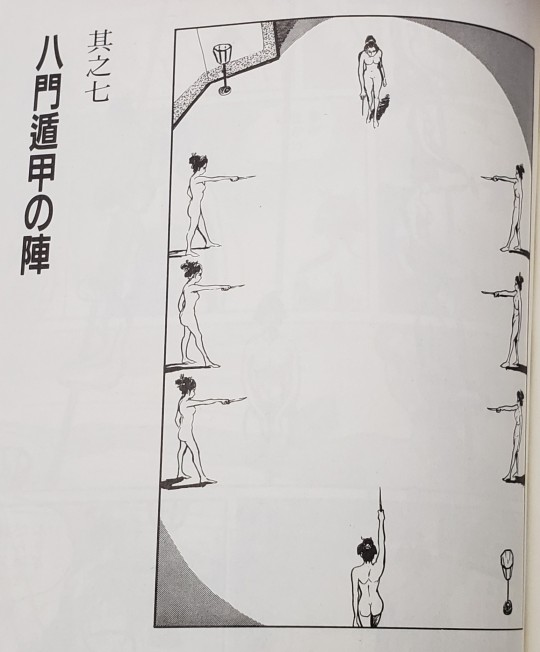
Ok, I’m certainly learning about a lot of new things as I read through Kozure Ookami. Chapter 7′s title is 八門遁甲の陣 (hachimon tonkou no jin), which roughly means something like The Mystical Eight Door Battle Formation.
The English translation for Lone Wolf calls this chapter Eight Gates of Deceit.
So what’s the deal?
遁甲 (tonkou) refers to a type of Eastern astrology. In particular, there’s something called Qimen Dunjia, which in Chinese is usually spelled 寄門遁甲, which is an ancient form of divination from China. It was originally used with figuring out military tactics. It uses a 3x3 grid.
I’m not exactly sure where “bamen” (八門) comes into play. But either way, Japanese audiences are probably familiar enough with the term 遁甲 to understand the meaning here.
Western readers are probably much less familiar with the terms, and so they’ve chosen a different tact in translation. As far as I can tell, nothing in this title suggests “deceit,” and so the English translators are probably using something that happens in the chapter.
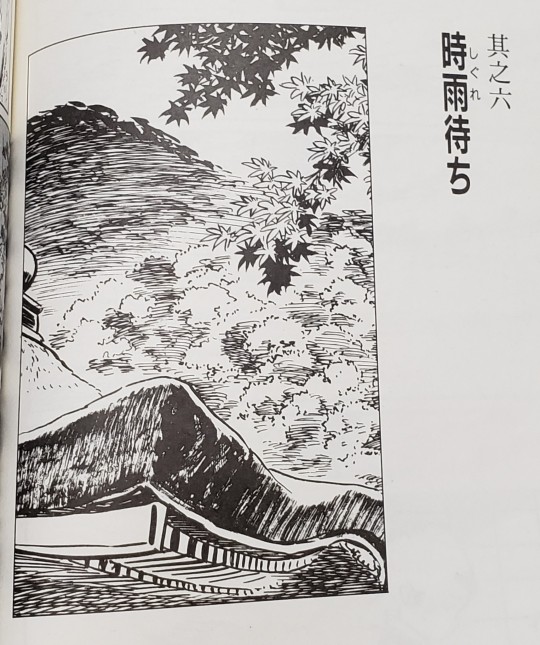
Chapter Six. “Waiting for the Late Autumn Rains.”
Japanese seems to have special words for seasonal weather. This chapter shows a good example, 時雨 (しぐれ, shigure), means later autumn or early winter drizzle. Which is also a special reading for those characters.
I think the first time I ran across the term “shigure,” it had to do with a museum in Japan that somebody (recently retired?) from Nintendo had created, and I think they were using the Nintendo DS (the original DS, which was just new at the time) to serve as a tour guide.
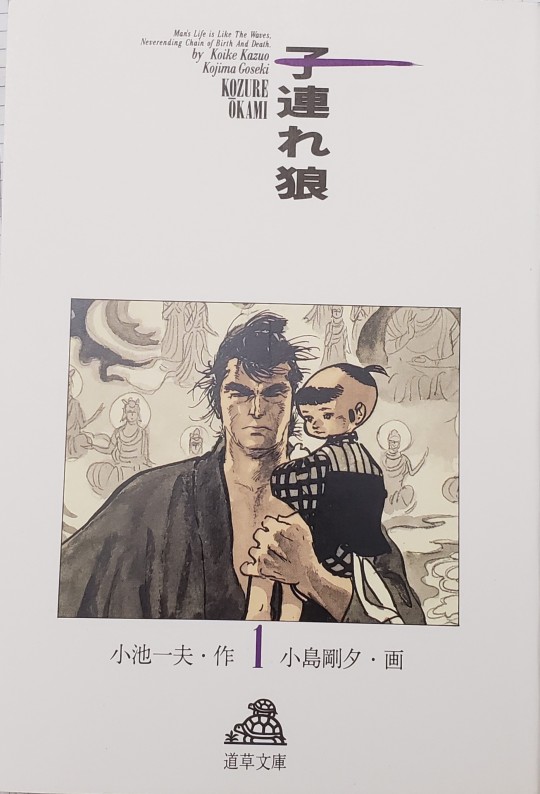
On to the next series! Next up, Kozure Ookami (子連れ狼). Numerous people have recommended it to me, and so I’ve wanted to read this one for a while, but I don’t know anything about it, other than it’s a historical play ( 時代劇, jidai geki).
It most often gets the translation “Lone Wolf and Cub” but as usual, the English is adding more than is in the Japanese. A more accurate translation would be “Wolf Taking along (his) Child.” The 連れ (tsure) means to take along, and becomes ‘zure’ when combined with 子 (ko, child), to give ‘kozure.’
This story came out in the 1970s (1970-1976) and comprises 28 volumes. It also looks like it will be heavy on historical aspects, so I’ll likely be on this one for a while. Even finishing one book per week will mean half a year!
Edit: Oof, and the first page is already pretty tough. I might need to intersperse something on the lighter side. Recommendations welcome!
When Dawn from Arceus finds out Smol Dawn is getting bullied.
Twitter: https://twitter.com/BriggBragg
Post link
Shogun Assassin (1980, Robert Houston) Japan / USA
When the wife of the Shogun’s Decapitator is murdered and he is ordered to commit suicide by the paranoid Shogun, he and his four-year-old son escape and become assassins for hire, embarking on a journey of blood and violent death.
Post link

